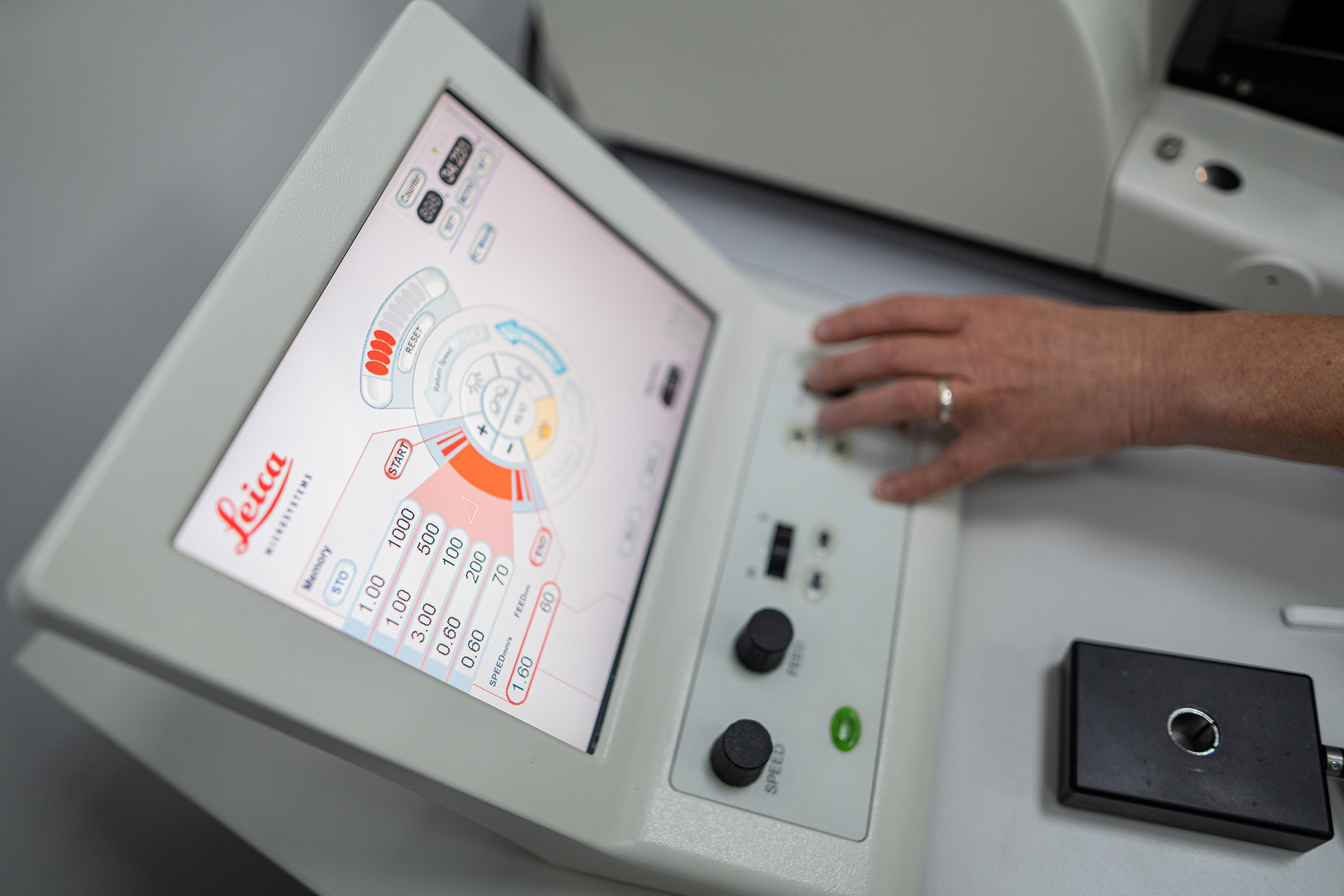CORE FACILITY
Advanced Microscopy and Imaging
Head: Roman Polishchuk
Staff: Elena Polishchuk, Roberta Crispino

Over the past decades, the rapid pace of gene discovery has fueled a deep exploration of gene functions at the molecular, biochemical, and cellular levels. Microscopy has become fundamental to this effort, enabling high-resolution mapping of normal and pathological gene products and unveiling the structural changes they induce. Today, high-resolution microscopy is a cornerstone technology across all research programs at TIGEM, supporting the characterization of genes and proteins at the cellular and subcellular levels.
The Advanced Microscopy and Imaging Core provides technical assistance, advanced expertise, and both qualitative and quantitative analysis of microscopy data to all TIGEM researchers. The Core is organized into two complementary divisions: the Light Microscopy Division and the Electron Microscopy Division.
Light Microscopy Division
The Light Microscopy Division offers state-of-the-art instrumentation and know-how for monitoring cellular behavior in real time and visualizing proteins with high spatial and temporal resolution. Researchers have access to a wide range of imaging technologies, including:
- Bright-field microscopy, fluorescence microscopy, and confocal microscopy.
- Live-cell imaging platforms, including spinning disk microscopy and resonant scanning confocal microscopy, to capture dynamic cellular events with minimal phototoxicity.
- Molecular imaging technologies such as FRET, FLIM, photobleaching, and photoactivation.
- Super-resolution microscopy techniques, including SIM and STORM.
Currently, 87% of TIGEM researchers actively utilize the Microscopy Facility for their experimental workflows, highlighting its pivotal role in driving discovery.
Between 2020 and 2025, imaging activities performed within the facility have contributed to the publication of over 30 scientific articles and to receiving more than 30 acknowledgements, reflecting the significant impact of the core’s technological and scientific support.
To meet the growing demands of the TIGEM research community, the Light Microscopy Division has recently expanded its equipment portfolio with several new instruments:
- The Nikon Confocal AX Resonant, a high-speed confocal system ideal for live-cell imaging of dynamic processes and to produce 3D reconstructions reducing acquisition time.
- The Leica Stellaris 8 Falcon, an advanced confocal microscope equipped with FLIM technology for precise molecular environment studies.
- ZEISS Confocal LSM 900, a confocal laser scanning system with LED source GaAsp Detector for higher sensitivity.
These new acquisitions complement a rich set of existing platforms, including:
- ZEISS Confocal LSM 880 with Super Resolution imaging with Airyscan and Elyra system (SIM, STORM) for high-resolution subcellular imaging.
- ZEISS Confocal LSM 800, a compact and versatile confocal system.
- ZEISS Confocal LSM 700, an essential tool for routine imaging applications.
- Confocal Nikon Spinning Disk for fast and sensitive live imaging.
- The Zeiss Inverted Apotome, offering structured illumination for enhanced contrast and optical sectioning in widefield fluorescence imaging.
- Leica MZ16FA Stereo Microscope and Leica Upright DM5500 for fluorescence and brightfield morphological studies.
- ZEISS Axio Scan.Z1 for high-throughput slide scanning and digital archiving.
The Light Microscopy staff offers extensive consultation, hands-on training, and continuous support in image acquisition, analysis, and data management, ensuring optimal use of all resources.
Electron Microscopy Division
The Electron Microscopy (EM) Division supports researchers in studying cellular ultrastructure at nanometer resolution and in precisely localizing proteins at the sub-organelle level.
Over the past five years, EM studies conducted within our core facility have contributed to 28 peer-reviewed publications by TIGEM researchers. These analyses have been instrumental in advancing our understanding of genetic disorders and the cellular mechanisms of SARS-CoV-2 infection, with findings published in high-impact journals.
To support diverse research needs, the facility offers a broad range of EM techniques, including:
Standard Methods:
- Routine Electron Microscopy: Enables detailed analysis of cell and tissue ultrastructure, its alterations under pathological conditions, and recovery following experimental treatments.
- Immuno-Electron Microscopy (IEM): Facilitates precise localization of normal and aberrant gene products with nanometer resolution.
Advanced Techniques:
- Correlative Light and Electron Microscopy (CLEM): Integrates live-cell light microscopy with EM to track and then capture high-resolution ultrastructural details of structures of interest in cells and tissues.
- Electron Tomography: Provides 3D ultrastructural analysis of intracellular architecture at exceptional resolution.
Through these cutting-edge methodologies, the EM Division offers unparalleled insight into the spatial organization of organelles and subcellular components, bridging functional and structural biology in genetically modified cells and tissues.
